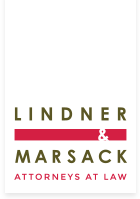By: Samantha J. Wood and Sally Piefer
Last month, the federal district court for the Southern District of New York struck down several regulations issued by the Department of Labor (DOL) regarding the Families First Coronavirus Response Act (FFCRA) and its two major provisions, the Emergency Paid Sick Leave Act (EPSLA) and the Emergency Family and Medical Leave Expansion Act (EFMLA). More information regarding this decision can be found here. Since this decision was issued, it remained unclear how the decision would impact employers outside of the Southern District of New York.
Thankfully, last week the DOL provided employers with some guidance by revising its FFCRA regulations and clarifying the following:
Work Availability
The FFCRA provides paid leave to employees who are “unable to work (or telework)” because of a need to care for a child. The DOL’s earlier regulations indicated that employees were not entitled to the paid leave if the employer “does not have work” for the employee to perform.
The DOL has reaffirmed that an employee may take FFCRA leave only to the extent that a qualifying reason for such leave is the “but-for” cause of his or her inability to work. In other words, an employee is only entitled to FFCRA leave when the employer has work available for the employee to perform but s/he cannot perform it “because of” a qualifying reason. If there is no work for an individual to perform due to circumstances other than a qualifying reason for leave, such as a temporary or permanent worksite closure, the employee is not eligible for FFCRA leave. However, employers may not make work unavailable in an effort to deny FFCRA leave; indeed, altering an employee’s schedule in an adverse manner because the employee requests or takes FFCRA leave would likely constitute impermissible retaliation.
Intermittent Leave
The DOL has also reaffirmed its earlier regulations regarding intermittent leave. Specifically, employees are permitted to take intermittent leave under the EFMLA or the EPSLA only if the employer consents to the use of such intermittent leave.
Health Care Provider Exception
In an effort to prevent disruptions to the health care system’s capacity to respond to COVID-19, the FFCRA also allows employers to exclude from coverage “health care providers” or “emergency responders.”
The DOL’s earlier regulations broadly defined a “health care provider” to include “anyone employed at any doctor’s office, hospital, health care center, clinic, post-secondary educational institution offering health care instruction, medical school, local health department or agency, nursing facility, retirement facility, nursing home, home health care provider, any facility that performs laboratory or medical testing, pharmacy, or any similar institution, Employer, or entity” including “any permanent or temporary institution, facility, location, or site where medical services are provided that are similar to such institutions.” In addition, the regulations further expanded the definition to include the following: (1) any individual employed by an entity that contracts with any of these institutions described above to provide services or to maintain the operation of the facility where that individual’s services support the operation of the facility; (2) anyone employed by any entity that provides medical services, produces medical products, or is otherwise involved in the making of COVID-19 related medical equipment, tests, drugs, vaccines, diagnostic vehicles, or treatments; and (3) any individual that the highest official of a State or territory, including the District of Columbia, determines is a health care provider necessary for that State’s or territory’s or the District of Columbia’s response to COVID-19.
In light of the federal district court’s challenge to the broad definition, the DOL has narrowed the definition of “health care provider,” to include (1) employees who meet the definition of “health care provider” under the Family and Medical Leave Act regulations (physicians and others who make medical diagnoses); or (2) those who are employed to provide diagnostic services, preventative services, treatment services or other services that are integrated with and necessary to the provisions of patient care, which, if not provided, would adversely impact patient care. Employers who originally exempted employees under the broad health care provider definition will need to re-evaluate whether they can continue to exclude their employees from coverage.
Advance Notice of Need for Leave
The FFCRA permits employers to require employees to follow reasonable notice procedures to receive FFCRA leave. The DOL’s earlier regulations provided that “prior to” taking leave, the employee must provide the employer the reason for leave, the duration of the leave, and if applicable the authorized person who ordered isolation or quarantine.
The DOL has revised this requirement to require employees taking FFCRA leave to provide their employers with notice of leave as soon as practicable, when the necessity for such leave is foreseeable. While this will generally mean that employees are required to provide notice before taking leave, there may be some instances where leave is not foreseeable and prior notice is not practicable.
Additionally, the DOL clarified that the documentation required from the employee for FFCRA leave also need not be given “prior to” taking FFCRA leave, but is only required as soon as practicable, which in most cases will be when the employee provides notice of the need for leave.
Conclusion
In light of the DOL’s revised regulations, employers must modify their practices to ensure compliance with the narrower health care provider exception and the more flexible notice and documentation requirements.
If you have any questions about these new regulations, please contact your Lindner & Marsack attorney or the Firm at (414) 273-3910 to seek counsel.
